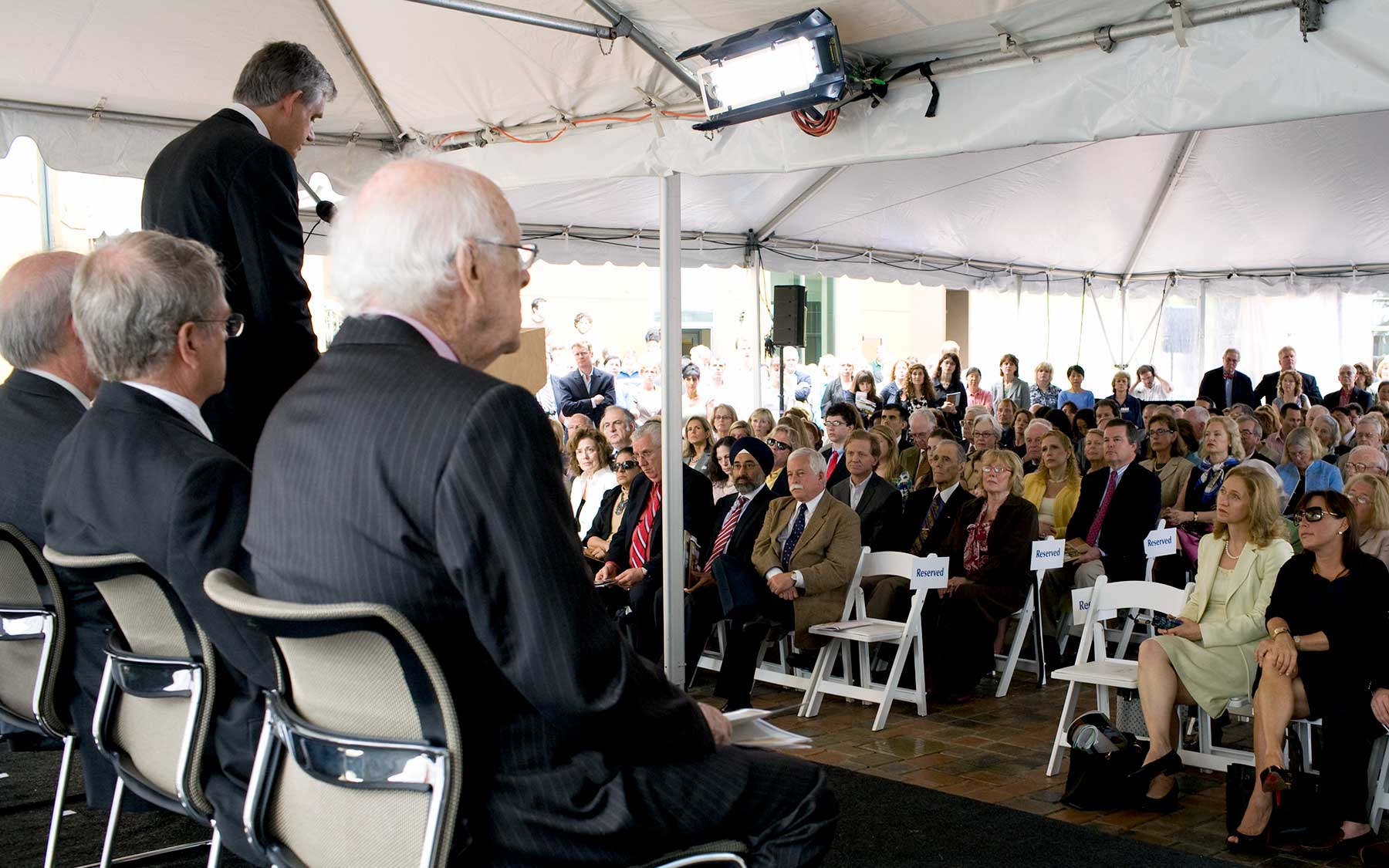Research at the $100 million Hillside Laboratories will address “grand challenges” facing science and society
Cold Spring Harbor, NY — Cold Spring Harbor Laboratory (CSHL) cut the ribbon on six new research buildings, collectively called the Hillside Laboratories, at a dedication ceremony on June 12. The $100 million complex represents the largest expansion in CSHL’s 119-year history and increases active research space by 40%. When fully occupied the buildings will house approximately 200 new research-related personnel, which will mark a 20% increase in employment at CSHL.
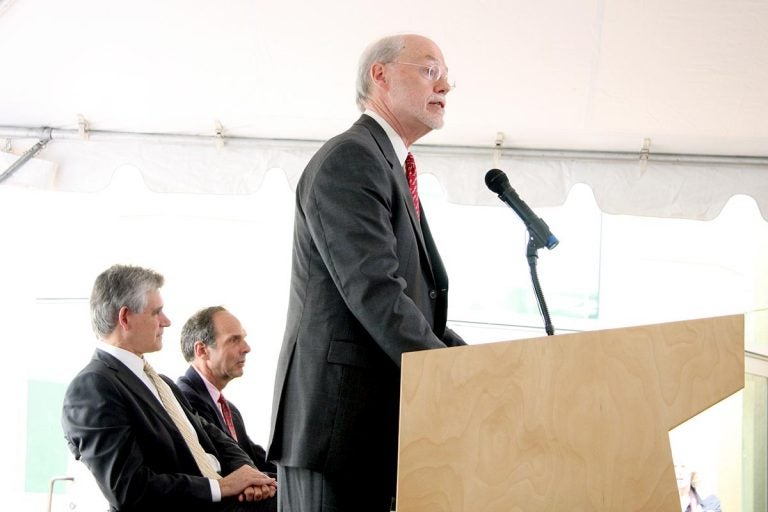
At the dedication ceremony, CSHL President Bruce Stillman said, “This expansion will allow Cold Spring Harbor Laboratory to do more of what it has always done best: perform pioneering research at the leading edge of biological science, particularly in the areas of cancer and neuroscience, but also in the emerging field of quantitative biology.” Dr. Stillman spoke before a distinguished audience of CSHL staff and supporters from the research, business, philanthropic and government communities, including Nobel laureate Philip Sharp.
In his dedication remarks, Dr. Sharp, perhaps best known as the co-discoverer of gene splicing, suggested how research to be performed in the Hillside buildings “will help humanity surmount some of the great challenges of our time.” He recalled that the first public announcement calling for a national effort to sequence the human genome was made at the dedication of a new research building at CSHL in 1985. He then issued his own implicit challenge to the scientists who will occupy the gleaming new Hillside buildings. Sharp envisioned a future in which data collected in millions of patient electronic medical records will be merged with genome scans of the same individuals. This would serve as the basis for profound insights into cancer and mental illness, two of the foci of work in the new Hillside Laboratories. Such an effort, he said, might also help usher in an era of personalized medicine.
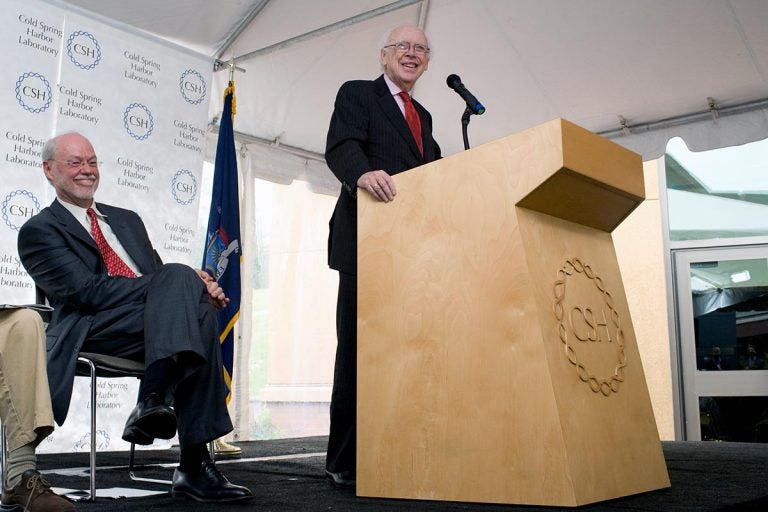
CSHL’s President Stillman in his remarks thanked gathered guests for their support of the expansion project, saying, “Such a significant addition to our research space was made possible by the generous contributions of private donors, philanthropic foundations and the New York State ‘Gen*NY*sis’ initiative, which provided a grant of $20 million. They had the foresight to understand the significance of this expansion to the Laboratory’s long-term mission to advance our ability to diagnose and develop more effective ways of treating cancers, neurological diseases and other major causes of human suffering.”
A capital campaign raised over $200 million to support the construction of the new research buildings, recruitment of new investigators, equipment for new research projects and endowment for research and graduate education. The project was also supported by a bond issued with the Nassau County Industrial Development Authority.
The Hillside Laboratories
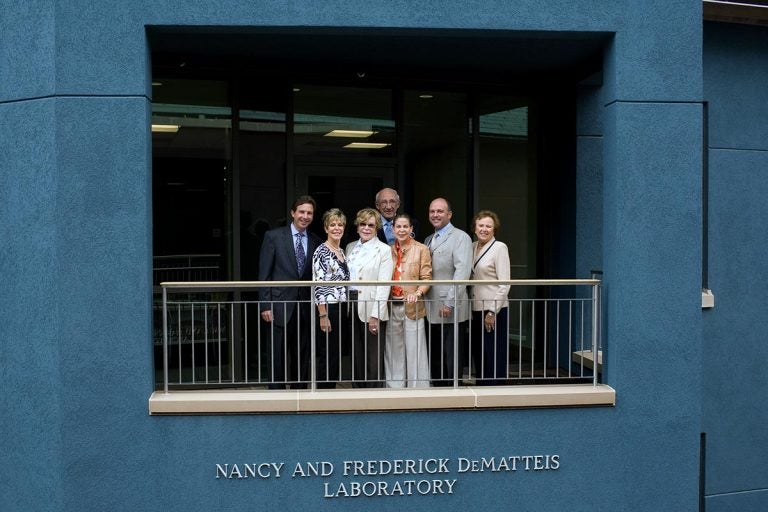
- The Donald Everett Axinn Laboratory, for research on the neurobiological roots of mental illness;
- the Nancy and Frederick DeMatteis Laboratory, for research on the genetic basis of human diseases, including autism, cancer, and schizophrenia;
- the David H. Koch Laboratory, home to a newly established Center for Quantitative Biology, where an interdisciplinary team of top mathematicians, physicists, and computer scientists will develop mathematical approaches to interpret and understand complex biological data sets;
- the William L. and Marjorie A. Matheson Laboratory, for research on the tumor microenvironment and metastasis;
- the Leslie and Jean Quick Laboratory, for research on new therapeutic strategies for treating cancer; and
- the Wendt Family Laboratory, for research on neurodevelopment and the wiring of complex circuits in the brain.
Designed to foster the progress of scientific discovery
Speaking at the opening ceremony, CSHL Board Chairman Eduardo Mestre said, “An important goal for the design of the Hillside Laboratories was to encourage collaboration among scientists and foster the progress of scientific discovery, while preserving the historic appeal of CSHL’s picturesque campus. Looking at this beautiful complex I believe we have succeeded brilliantly.”
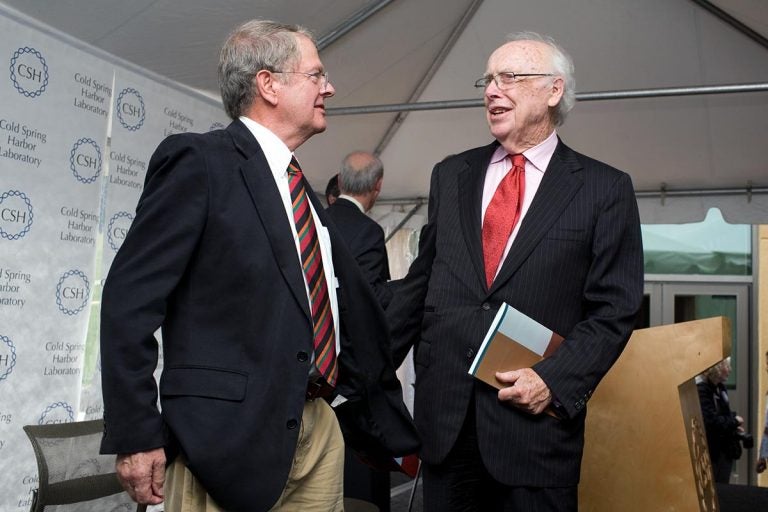
The six new buildings are actually outcroppings of a single interconnected structure with an infrastructure that is integrated beneath ground level. Each of the laboratories rises from the ground in a different place, giving the appearance of six discrete buildings. Nestled into the hillside, the buildings are connected at various elevations and share a common utility grid that will make them 30% more energy-efficient than prevailing standards for laboratory facilities.
In order to preserve the idyllic nature and existing environment of the 115-acre campus, the Hillside Laboratories have been designed to complement rather than overpower CSHL’s smaller, historic buildings along the western shoreline of Cold Spring Harbor. In addition to the six research buildings, the new complex features the Laurie and Leo Guthart Discovery Tower, the tallest structure in the group, which serves to vent heat from the six buildings while providing an aesthetic “cap” for the ensemble.
Other unique features of the complex include a water element that threads like a mountain stream through its center; a 200-foot-long bridge; an award-winning storm water management system; meticulous landscape design; and spectacular new vantage points for viewing Cold Spring Harbor.
The Hillside Laboratories were designed by Centerbrook Architects and Planners LLP, which was selected for this project based on its history of award-winning designs of earlier CSHL buildings and its commitment to creating unique and uplifting designs that fulfill program and budget objectives while enriching the natural surroundings.
In the construction phase of the project, CSHL emphasized the hiring of local Long Island craftsmen and -women. It is estimated that the project provided as many as 250 construction industry jobs on Long Island during the course of its nine-year planning and construction phases.
Hillside Laboratory Facts
- The construction project is the largest ever undertaken by CSHL and will increase research space by 40%.
- The expansion at CSHL will create 200 new high-paying, high-tech jobs on Long Island.
- More than 250 project contractors, consultants, and craftsmen who worked on the project were from local Long Island companies.
- Construction costs on the new 100,000-square-foot building complex totaled $100 million.
- The laboratory buildings are designed to be 30% more energy-efficient than standards set for laboratories by ASHRAE (American Society of Heating, Refrigerating, and Air-Conditioning Engineers).
- An innovative environmental design for storm-water management uses newly-created wetlands, rain gardens, and bio-swales to filter storm water runoff from the hillside before it makes its way into the harbor. This system has a capacity of 254,000 gallons, and was awarded the 2007 Project of the Year by the Nassau County Society of Professional Engineers.
- Nearly 700 trees have been planted to reforest the approximately 11 acres of forest that were cleared to make way for construction.
- All organic material from the site was retained for reuse. Trees were chipped and mulched for site restoration, and topsoil was scraped away from the building site, retained onsite, and reapplied during site restoration.
- Approximately 200,000 cubic yards of excess earth was removed from the site. A sand mining operation was set up on-site, screening out rock, gravel, fine sand and other high-quality construction material before being removed from site. Sale of the construction material reduced the cost of excavation from $4 million to $2 million.
- William H. Grover, FAIA, and James C. Childress, FAIA, are Centerbrook Architects’ Partners-in-Charge of the Hillside complex. Todd E. Andrews, AIA, is the Project Manager. Visit www.centerbrook.com for more information.
- Art Brings is the Vice President, Chief Facilities Officer in charge of the project.
Written by: Dagnia Zeidlickis, Vice President, Communications | zeidlick@cshl.edu | 516-367-8455
